It's a huge, epic story. I've actually been telling most of it for a couple of weeks in various English classes, and I've decided to use the slides I made for class here. So I give you my volunteering in India presentation.
Keep in mind, the slides are intended for young ESL learners, ranging from elementary grade 5 to junior high grade 3 (9th grade in US), so they're written in simple English and Japanese ^_^ I'll also throw in some added comments, to flesh the story out.


My trip took me from Nagoya, Japan, through Hong Kong, and into Delhi, where I met up with the other volunteers.
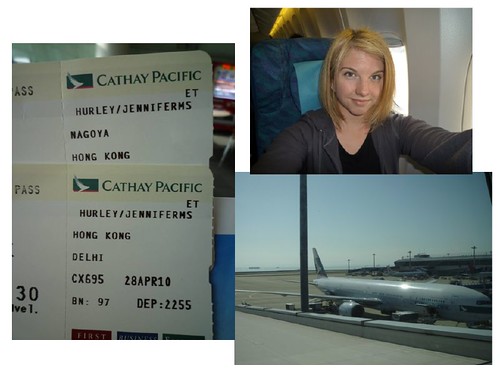
How long do you think it takes to get from Nagoya, Japan to Cheveru Village in India?

Tragically, although I was able to make the switch between airplanes in Hong Kong, it appears my bag was not, as it failed to arrive with me in Delhi. So, there I was, alone in a place I'd never been to, at 3 in the morning, with no way of contacting anyone, filling out lost luggage paperwork and almost missing my connecting flight to Hyderabad. The bag arrived in Delhi the following day, but since I'd already moved on to the south of the country, I ended up fighting with the airline for a week to get it back.
A week! Think about that. No toothbrush. No pajamas. No underwear. For a week. Fortunately, I was able to purchase a toothbrush, some underpants, and a spare shirt. I borrowed another shirt and another pair of pants, and was able to swap out one outfit a day - alternating between the red shirt and the yellow shirt, the jeans and the borrowed pants, until my bag arrived. The day before we left >.<
So why put myself through all of this?
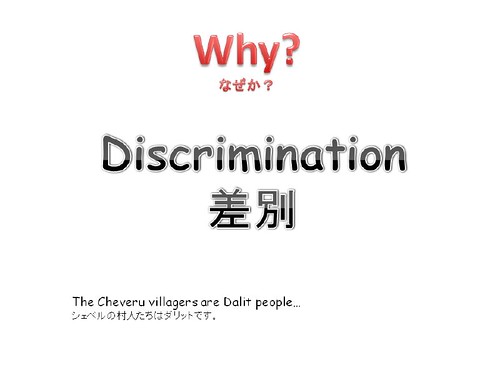
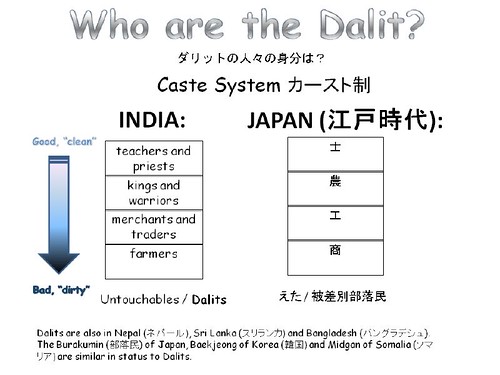
Notice that there are also Dalit in Nepal, Sri Lanka, and Bangladesh, and countries like Japan, Korea, and Somalia have groups similar in status to the Dalit.
But. India is kind of special. Why?
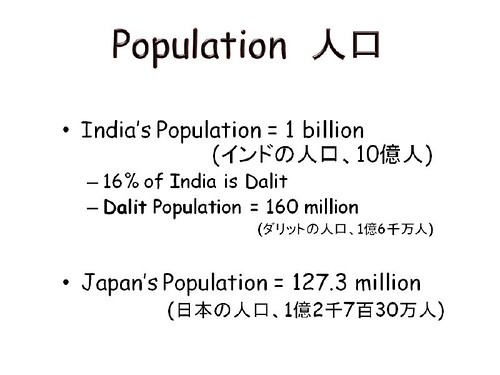
It's HUGE! 1 BILLION people. There's about 6 billion people in the whole world. And a sixth of them live in India. Dalits account for 16% of the population in India, which means there are actually MORE Dalit people in India than all of the people in Japan.

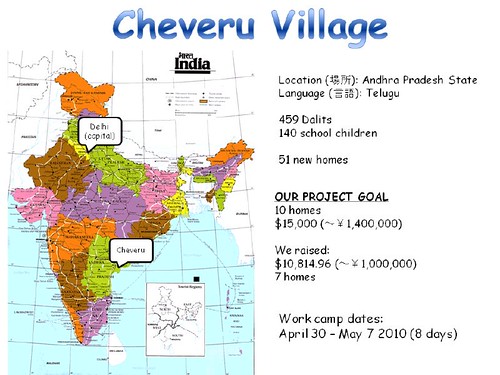
Interesting side note, did you know that there are 22 official languages in India? The primary languages are Hindi and English, and then each state is allowed to have it's own local language too. The official language of Andhra Pradesh (where we were) is Telugu. When Ravi, a Telugu speaker (and the leader of ARV and our "trip Dad") called Delhi, where they speak Hindi, to inquire about my bag, they spoke in English. I thought that was cool d(^_^)b
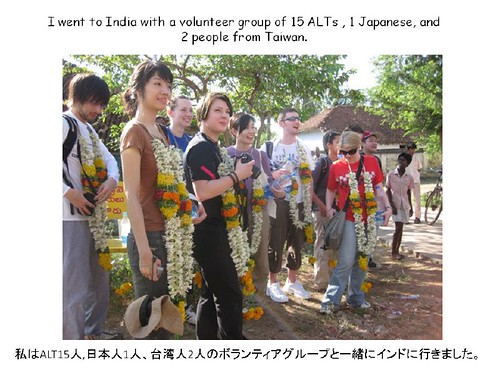
This was taken as we arrived on the first day in the village - when they greeted us with the most amazing flower leis (which were incredibly heavy) and paraded us down the main street out to the work site, with drums and dancing and beautiful, beautiful smiles ^^ Also, check out the girl in the red shirt, heh heh heh
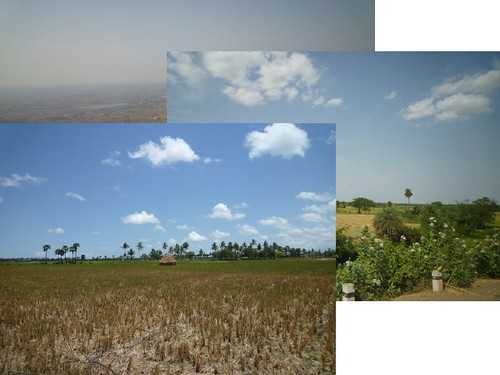
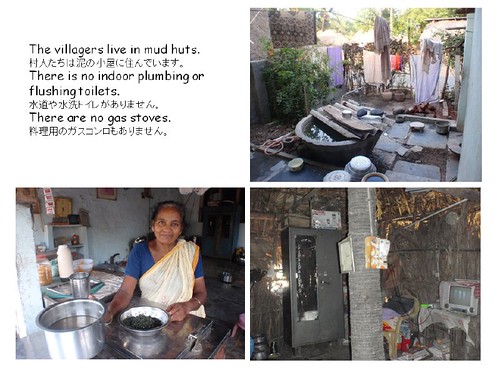
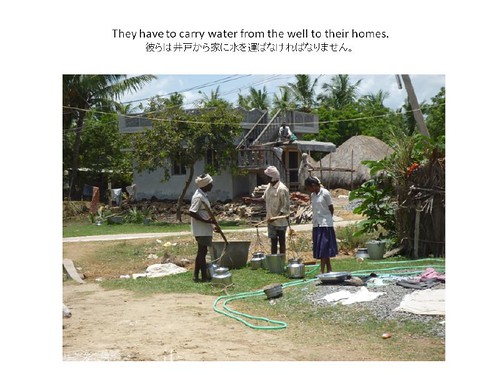
Think about that - no indoor plumbing. Every time you need water, you have to carry it from a well to your house. Every. Time. And forget about flushing toilets, they don't exist there.
This is what their houses look like now
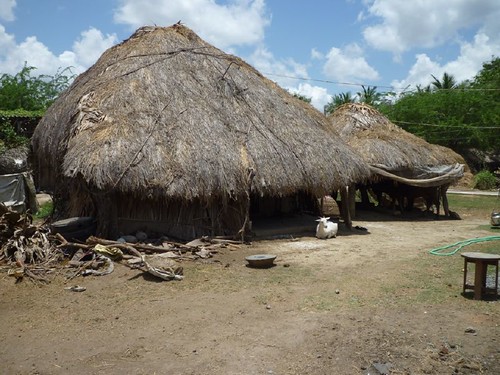
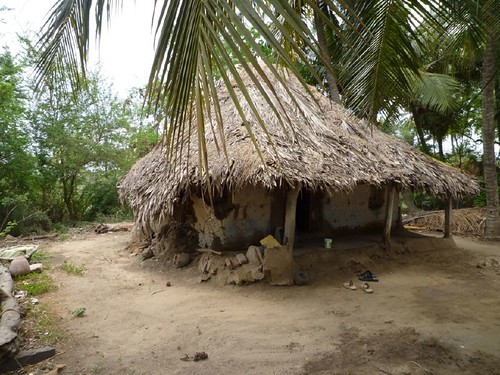
There are animals everywhere. Cows, goats, and chickens roam free, you would just see them wandering down the streets, even in the cities. I often wondered how people found their cows when they wanted them, and if they could recognize them on site, like a pet dog or a cat.
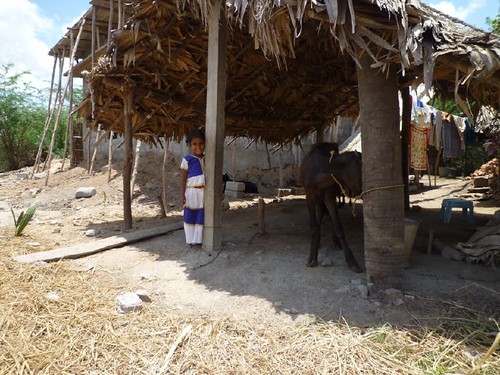
Of course, as cows are sacred in India, beef is strictly out of the question. If you go to a McDonalds (which we did, with much glee after we left the village), you won't find one hamburger on the menu. No Big Mac's. No Quater Pouder with Cheese's. They have chicken nuggets, chicken burgers, salad burgers, and french fries. And they always have little marks that will tell you if the food is vegetarian or not.
While we were volunteering, we ate all of our meals in the village, in their school house.
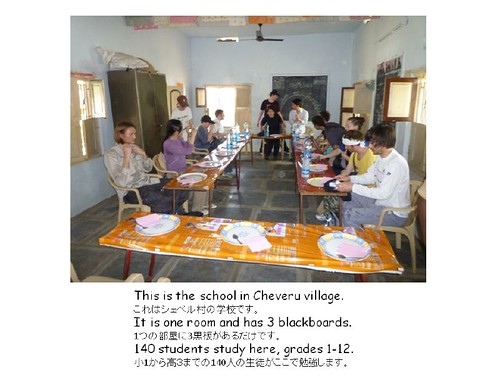
Although they teach grades 1-12, it's relatively rare for these children to actually complete all 12 grades. Most girls in India drop out after grade 5, and boys rarely make it past grade 8. The need to help support their families is just too great; according to UNICEF, India has the largest number of child laborers under the age of 14 in the world.

May is actually the height of summer in this part of India, and so all the kids were off on summer holiday. Quite a few of them came out to play with us every day, and their ability to communicate in English was pretty darn good. It made me kind of sad, in a way, as here are these kids with next to nothing, but they are eager to talk with us and can communicate fairly well. And then there are my students, who have virtually anything they could ever ask for, and I'm lucky if I can get them to to remember how to say Thursday...
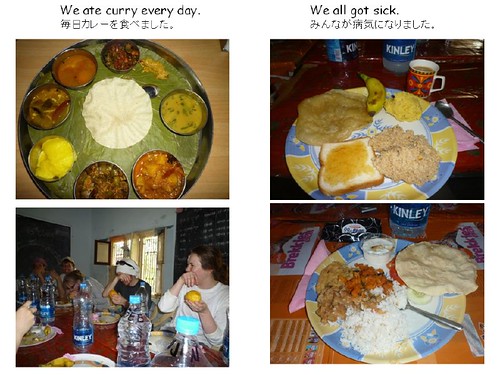
We ate curry every day. We all got sick. I was number 5, of 15 (out of 18 total volunteers) to go down with "Delhi belly", as they say. I was out for 2 days, during which time I stayed in the hotel watching tv and trying to ride out the power outages and 'A/C off-time' as best as I could. Lucky for me, India has quite a lot of English language programming, and I did get to see a lot of the Magadheera music videos (see the post below for more about that).
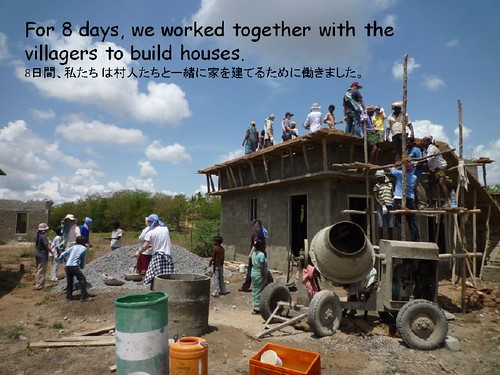
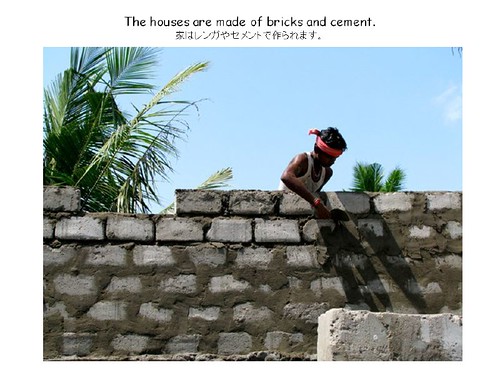

This is actually a two-family home, one would be on the left side and one on the right. Each home has 2 rooms.
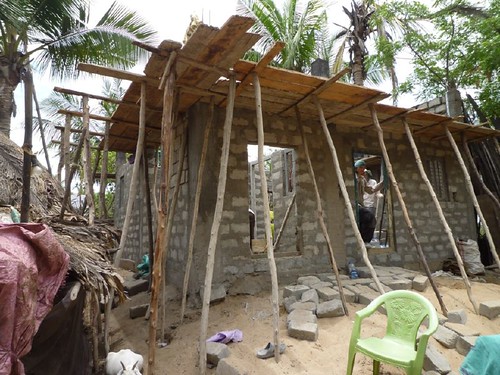

The only way up to the roofs we were working on was these crazy bamboo ladders.
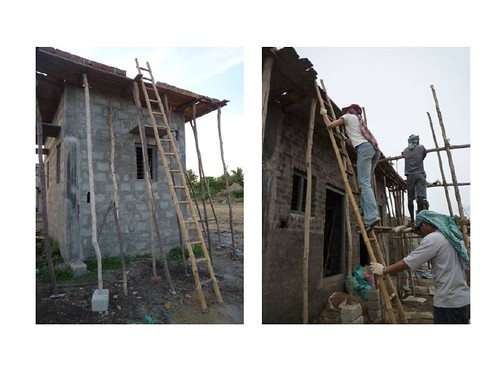
^I climbed that.
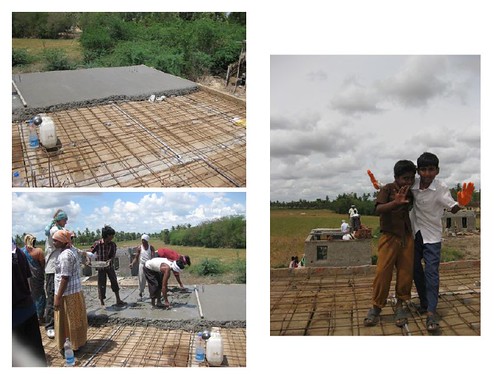
Everybody helped out on the roof - paid laborers, volunteers, women in saris, kids in sandals...
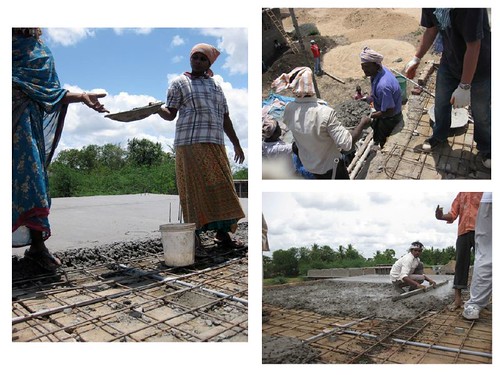
Mostly our work resembled a kind of cement-tray relay, where we passed the cement up to the roof, dumped it out, the professionals would smooth it out, we tossed the empty trays to the ground, picked them up, and back over to the cement mixer to be loaded up again.
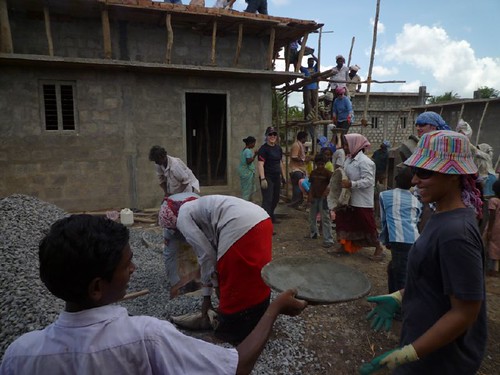

After my, uh, illness, I took it easy on the work and helped out plastering the inside of some of the homes where the roofs had been finished. Which basically meant sitting in a chair and occasionally getting up to hand cement to the pros :D
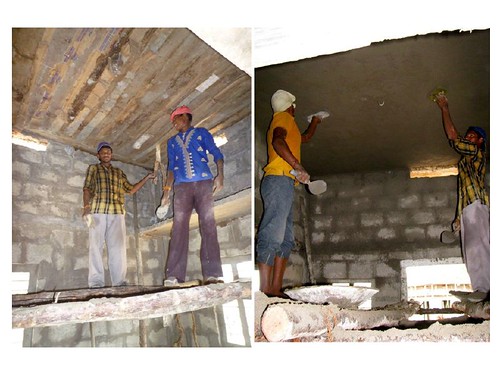
check out that scaffolding. safety first!
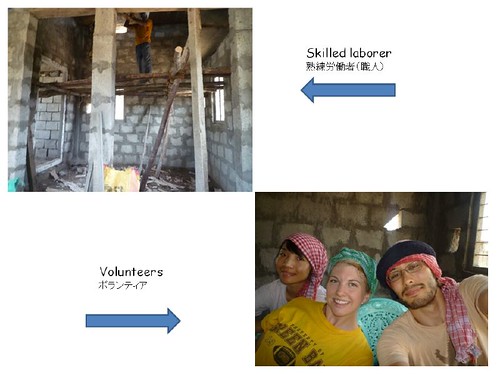
^yellow shirt day ;)
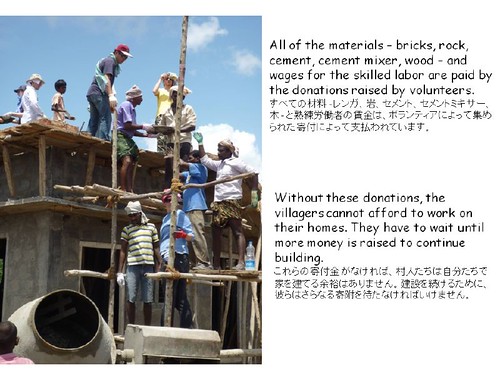
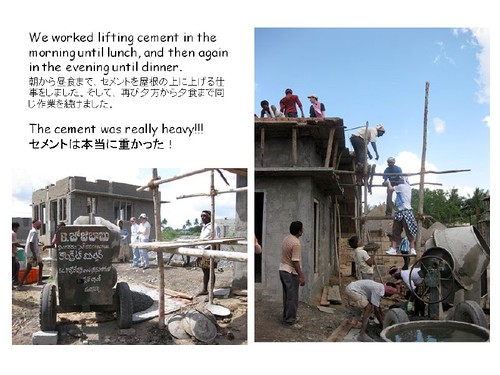
We worked from breakfast to lunch, and then not again until evening. We took the afternoons off. Why? ...

With temperatures like that, it was all we could do to survive the afternoons without melting. Especially when the power went out (as it did, several times a day) and the fans stopped working. Bleh.


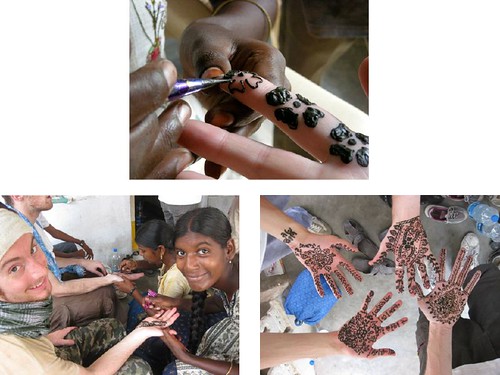
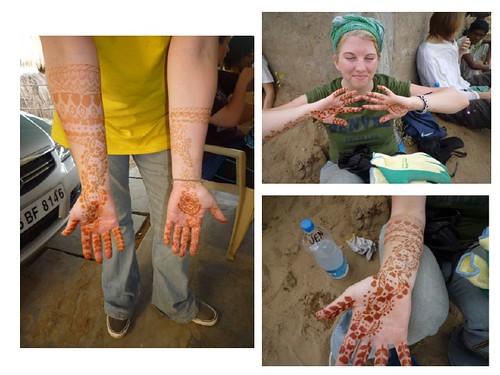
On our last day in the village, we had a party to celebrate the end of the work camp. All the girls got saris, which were tailored for us, and the guys got traditional suits. The girls also got glass bangles (which I've been wearing ever since) and flowers for our hair ^o^
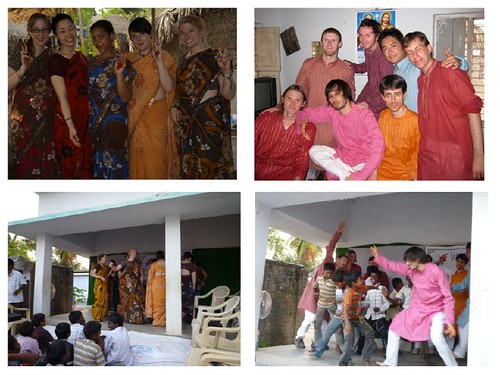
And then it was time to go T_T It went by so quickly! But it was such an amazing experience. It was so incredible to meet the villagers, who, although they have so little and must live such difficult lives, they genuinely seemed so happy. It really taught me a lot, especially while I myself had nothing, my temporary impoverishment (having only the barest essentials and having to live off the charity of others to get through the days); I really found that all of those things I brought with me I didn't need. Except the diarrhea medicine. That would have been nice to have.
The night of the party we all headed back to the hotel, showered, then headed off on an overnight bus back to Hyderabad for a morning flight to Delhi. From which we took another bus up to Agra and out to...

Our single day of sightseeing!
Seeing the Taj was great, and also it was a good experience to see kind of the "other-side" of India - the one in which we were seen not so much as heroic volunteers, helping the people, but more as marks for the street vendors and pickpockets... which luckily nobody fell victim to, this time.
All in all, an amazing trip. Absolutely left me wanting more. This is a country that definitely hasn't seen the last of me!
And if, after reading all of that, you find yourself wanting to help out these amazing people, I encourage you to make a donation via the Longitude website, which you can find by clicking HERE.
While we were working, a man came from another village nearby asking Ravi to help him build 100 homes. They had received grants from the government, but the money isn't enough to complete the homes; and in a tragic catch-22, once they've been granted the money they have to use it within a certain time-frame or the government will take it back. So they're desperate to get the houses built before even the little money they've received is lost. Unfortunately, as ARV is struggling to raise enough money just for the homes in Cheveru village, Ravi had to turn the poor man down. It was heartbreaking to see. There has to be a better way to help these people than relying on the donations the work camp volunteers can beg from their friends and families. I just haven't figured out what it is yet...

No comments:
Post a Comment